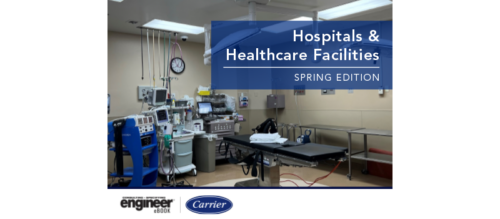Power Monitoring Helps Hospital Owner Improve Its Financial Prognosis
Advocate Health Care is the largest, fully integrated healthcare delivery system in Chicago, and one of the top 10 systems in the United States. Two years ago, with deregulation creating new volatility in the energy market, the company decided it needed to take a proactive approach to managing energy use in its 10 hospitals.
Advocate Health Care is the largest, fully integrated healthcare delivery system in Chicago, and one of the top 10 systems in the United States. Two years ago, with deregulation creating new volatility in the energy market, the company decided it needed to take a proactive approach to managing energy use in its 10 hospitals. However, managers understood they’d need some help—their expertise lay in running hospitals, not energy systems.
So Advocate brought in an external energy-services company, unaffiliated with any energy providers. One of the first steps this advisor took was to develop an accurate load profile for all Advocate sites. To accomplish this task, more than 60 meters and recorders were installed in strategic locations throughout Advocate’s hospital network. This effort gave the company and its advisor much more data than the previous monthly utility-bill review had ever provided, on a much timelier basis.
Facility engineers and operators are now emailed daily load-profile reports covering their equipment and buildings, while managers and directors receive weekly and monthly summaries. In addition to aiding long-term planning, this information makes it easier for building personnel to troubleshoot anomalous usage issues. One example: Engineers were able to relate one series of high-use readings to a housekeeping-staff practice of recharging battery-powered equipment while employees were at lunch—and power prices were at their highest.
In addition, monitoring is providing facility managers with new ways to benchmark efficiency across all hospital operations. These personnel can now compare per-square-foot energy use, and look at ways to improve performance across Advocate’s system. Load profiling also proved helpful in allocating steam and chilled-water costs after the company’s recent sale of professional-services buildings adjacent to several of its hospitals.
The new data also is the foundation for the more advanced consulting services Advocate’s new energy advisor is providing. In one recent case, consultants used the information to devise an alternative chilled-water distribution plan that eliminated the need for replacing an expensive chiller. In another example, consultants studying grid-synchronization issues were able to modify the layout of emergency generators, saving the need for additional—and costly—switches.
The new load-profiling and consulting services initially were projected to save Advocate about $500,000 a year in energy costs, but real savings have added up to more than twice that amount, participants say. Additionally, utility-bill monitoring services have validated and resolved disputed bills totaling more than $450,000. Going forward, managers now are looking at the new monitoring data to provide guidance for a five-year energy-systems investment plan now in development.
For more information on energy management systems from Siemens BT, go to www.sbt.siemens.com/bau/inquiry
Do you have experience and expertise with the topics mentioned in this content? You should consider contributing to our CFE Media editorial team and getting the recognition you and your company deserve. Click here to start this process.


